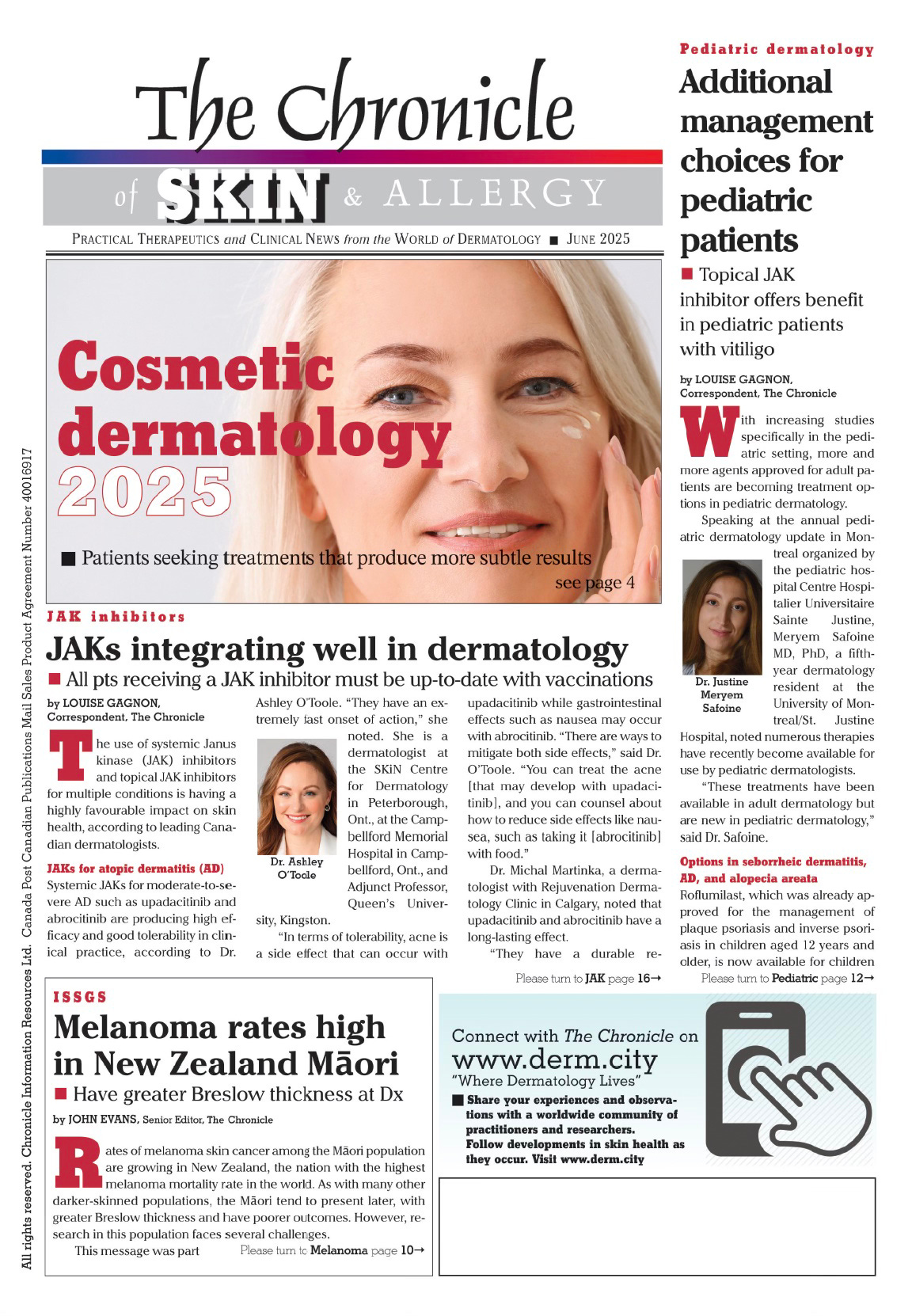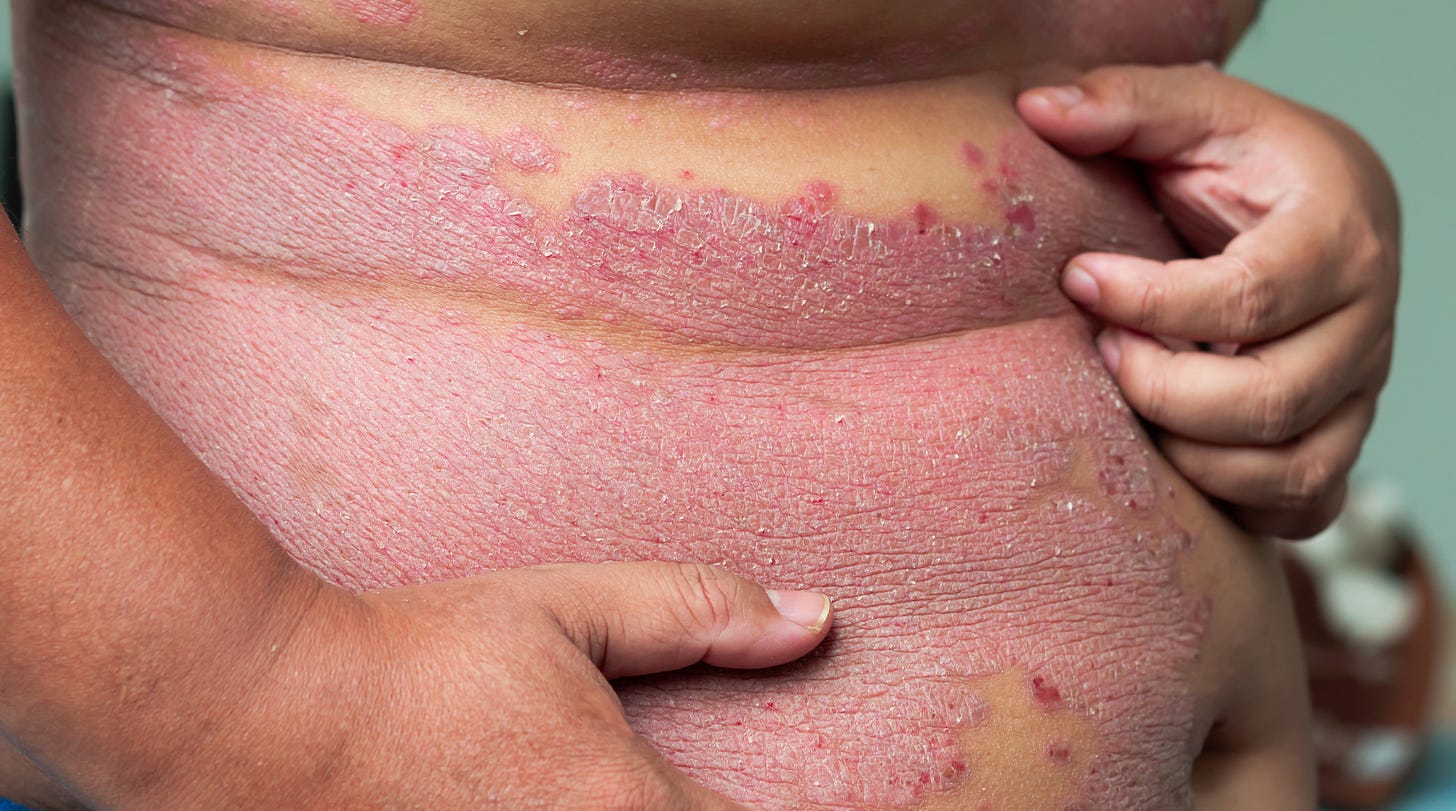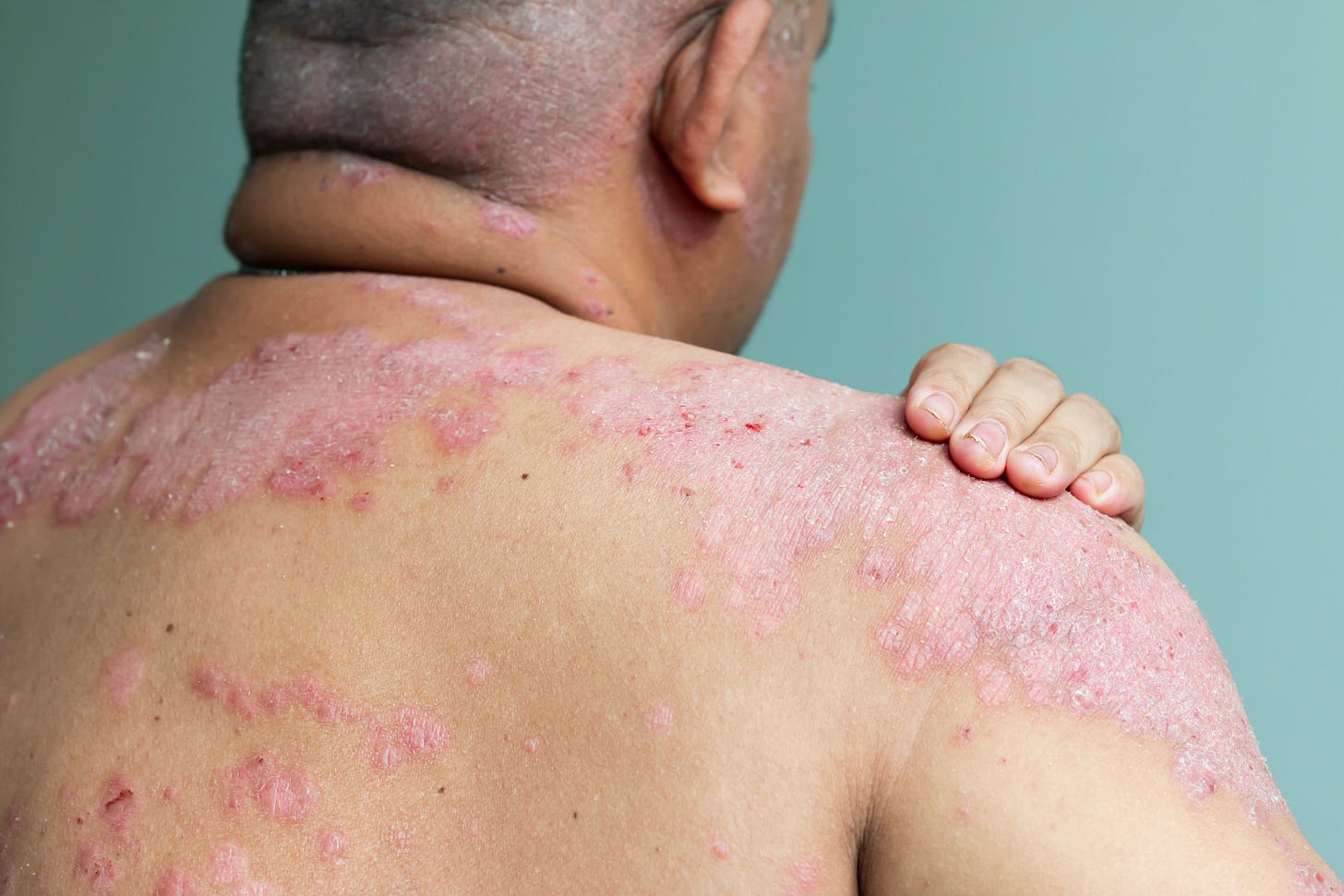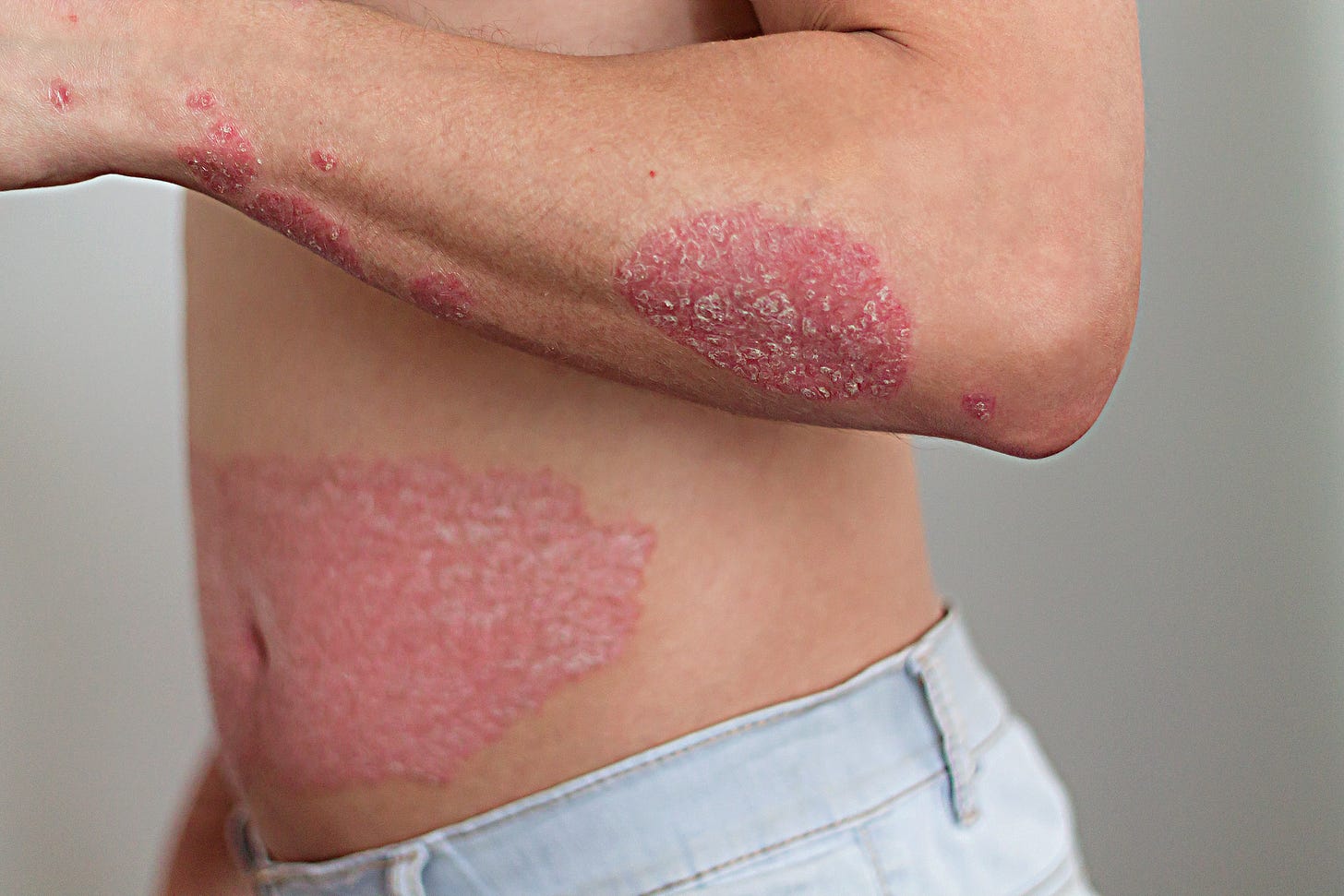Combining targeted real-world data with advanced analytics
Today's report also covers palmoplantar pustulosis controlled trials, treating plaque psoriasis with tapinarof cream 1%, and more (1,600 words, 6 minutes, 30 seconds)
The Vender on Psoriasis e-newsletter is supported by an unrestricted grant from Sun Pharma Canada
Good morning and welcome to the 18th issue of Special Reports: Skin Spectrum Weekly presents “Vender on Psoriasis.” This series is based on Dr. Vender’s popular column appearing in each edition of The Chronicle of Skin & Allergy, which offers expert commentary and opinions on current clinical developments in PsO. We’d love to get your feedback and suggestions and invite you to be in touch. Please write to us at health@chronicle.org

Combining targeted real-world data with advanced analytics
Real-world evidence (RWE) is increasingly recognized as a critical complement to randomized controlled trials (RCTs) in informing regulatory, payer, and clinical decision-making, particularly for complex, heterogeneous diseases such as those driven by type 2 inflammation. However, RWE data sources are often fragmented and inconsistently collected, limiting their utility for large-scale, hypothesis-driven research (Frontiers in Allergy DOI 10.3389/falgy.2022.951795).To address these challenges, the Immunolab platform was developed as a scalable, interactive RWE generation tool to facilitate comprehensive evidence generation in immunology, with a focus on diseases such as asthma, atopic dermatitis (AD), and chronic rhinosinusitis with nasal polyps. Immunolab leverages a large, de-identified electronic health record (EHR) and claims dataset from Optum, encompassing over 17 million patient lives and 33 type 2 immunological indications. The platform comprises three core analytical modules:
Patient Journey Mapper (PJM): Describes longitudinal drug treatment patterns and comorbidities in defined patient cohorts using a patient-quarter framework, with outputs including Sankey plots and histograms.
Switch Modeller (SM): Utilizes machine learning (LightGBM) and SHapley Additive exPlanation (SHAP) values to identify and quantify key drivers of treatment switching and augmentation events.
Head-to-Head Simulator (H2H): Employs causal inference methodologies (G-estimation, inverse probability of treatment weighting) to estimate comparative effectiveness of drug classes across clinically relevant endpoints, adjusting for confounding using high-dimensional covariate data.
Immunolab enables rapid, large-scale analyses, supporting over seven million distinct insight-generation analyses across its modules.
The PJM module can perform approximately five million analyses across 70 predefined patient subpopulations, providing granular visualization of treatment escalation and comorbidity patterns.
The SM module executes up to two million analyses, generating 130 descriptive statistics per switch/augmentation event and identifying key demographic and clinical predictors of treatment change using SHAP-based model explanations.
The H2H module facilitates up to 75,000 comparative effectiveness analyses, with 150 descriptive statistics across 150 patient subpopulations and four therapeutic groups, enabling robust, confounder-adjusted comparisons between drug classes.
Collectively, these modules provide a scalable, hypothesis-driven framework for RWE generation, supporting rapid, reproducible, and clinically relevant insights into treatment patterns, drivers of therapy modification, and comparative effectiveness in immunological diseases.
Immunolab demonstrates the feasibility and value of an integrated, analytics-driven RWE platform in immunology, offering standardized, high-throughput tools for evidence generation at scale. The platform’s modular design and advanced analytic methodologies position it as a first-line resource for researchers and decision-makers seeking to address complex real-world clinical questions and optimize patient outcomes in type 2 inflammatory diseases.
Comment: Immunolab is a digital platform designed to make real-world data (RWD) more usable and insightful, especially in diseases like asthma, atopic dermatitis, and chronic sinusitis. It combines large health record and insurance datasets from over 17 million patients and uses advanced analytics to explore treatment paths, understand why patients switch medications, and compare drug effectiveness in real time. Tools like Sankey diagrams, machine learning predictors, and causal inference models make the data visual and practical for researchers and clinicians.
My take: As someone involved in both clinical care and trials, I find platforms like Immunolab incredibly valuable. It helps bridge the gap between what we see in tightly controlled trials and what happens in the real world. The ability to run comparative effectiveness studies using actual patient data could become a standard part of our evidence toolkit in the near future.

Real-world screening data for liver fibrosis in psoriasis patients treated with biologics
Metabolic dysfunction-associated steatotic liver disease (MASLD), formerly nonalcoholic fatty liver disease, is positively associated with both the prevalence and severity of psoriasis. The Fibrosis-4 (FIB-4) index is a noninvasive tool for predicting significant liver fibrosis. This study aimed to evaluate real-world screening data for liver fibrosis, including MASLD, in patients with refractory psoriasis treated with biologics, using the FIB-4 index and type IV collagen 7S (4COL7S) as screening tools. This retrospective study (J Nippon Med Sch 2024; 91 (6)) included all adult patients (≥20 years) with moderate to severe refractory psoriasis who were prescribed biologics at Nippon Medical School from August 2023 to May 2024. Refractory disease was defined as inadequate response to topical or standard systemic therapies. Psoriasis subtypes included plaque-type psoriasis (PsV), psoriatic arthritis (PsA), and generalized pustular psoriasis (GPP). The FIB-4 index was calculated using age, aspartate aminotransferase (AST), alanine aminotransferase (ALT), and platelet count. FIB-4 index cutoffs were: high (≥2.67), intermediate (1.30–2.66), and low (<1.30) for patients <65 years; for those ≥65 years, a low cutoff of 2.00 was used. Patients with high FIB-4 or intermediate FIB-4 plus 4COL7S ≥4.8 ng/mL were referred to hepatology. Liver stiffness was assessed by transient elastography (FibroScan) in referred cases. Statistical analyses compared age, BMI, and FIB-4 index among biologic classes.
Ninety-six patients (64 men; median age 54–64 years by biologic class) were analyzed. Biologic classes included tumor necrosis factor (TNF) inhibitors, interleukin (IL)-17 inhibitors, and IL-23 inhibitors. The FIB-4 index was high in 10 patients (10.4%), intermediate in 35 (36.5%), and low in 51 (53.1%). All patients with a high FIB-4 index were aged ≥65 years. Among those with an intermediate FIB-4 index, 24 were aged ≥65 years and 11 were <65 years. Eleven patients (11.5%) were newly referred to hepatology; of these, six underwent FibroScan, which revealed elevated liver stiffness (>5 kPa) in four patients (7.5, 6.6, 6.6, 6.1 kPa), consistent with significant fibrosis or cirrhosis. Diagnoses included alcoholic liver disease, MASLD, and steatotic liver disease. Five of the 11 referred patients (45.5%) received lifestyle guidance (alcohol abstinence or weight loss). No significant differences in FIB-4 index or BMI were observed among biologic classes, though TNF inhibitor users were significantly younger.
Results showed a substantial proportion of patients with refractory psoriasis treated with biologics exhibited elevated FIB-4 indices, indicating risk for liver fibrosis. The FIB-4 index, supplemented by 4COL7S, is practical for screening, particularly with age-adjusted cutoffs. Close multidisciplinary collaboration between dermatologists and hepatologists is essential for the early detection and management of liver fibrosis in this population to prevent disease progression.
Comment: In this study from Japan, 96 psoriasis patients receiving biologics were screened for liver fibrosis using a blood test called FIB-4, along with another marker (type IV collagen 7S). Surprisingly, 10% had a high FIB-4 score and over a third were in the intermediate range. Some of these patients were later found to have liver stiffness or fatty liver disease upon further testing. The study also showed that older age was linked with higher liver risk, but there weren’t clear differences among biologic classes.
My take: We often think of psoriasis in terms of skin and joints, but this study reminds me that the liver needs attention too—especially in older patients. A simple screening test like FIB-4 could help us detect issues early and partner with hepatology when needed. It's a reminder to treat psoriasis patients holistically, not just dermatologically.
Predictive factors for responders to deucravacitinib
Deucravacitinib, an oral selective tyrosine kinase 2 (TYK2) inhibitor, has demonstrated efficacy in moderate-to-severe psoriasis; however, real-world predictive factors for therapeutic response remain unclear. This study (J Dermatol 2024; 00:1–5. https://doi.org/10.1111/1346-8138.1760113468138) aimed to identify baseline clinical and laboratory predictors of response to deucravacitinib in patients with psoriasis. A retrospective analysis was conducted on 74 Japanese patients (≥15 years) with moderate-to-severe psoriasis-including plaque psoriasis (n=59), psoriatic arthritis (n=11), and erythrodermic psoriasis (n=4)-treated with deucravacitinib 6 mg/day from January 2023 to February 2024. Response was defined as achievement of a static Physician’s Global Assessment (sPGA) of 0 or 1 with ≥2-point improvement from baseline at week 16. Baseline demographic, clinical, and laboratory parameters were compared between responders and non-responders. Multivariate logistic regression identified independent predictors of response.
At week 16, 41 of 74 patients (55.4%) met responder criteria. Responders were significantly older (median age 69 years [IQR 56–79]) compared to non-responders (57 years [IQR 48–67], p=0.0165), and had lower body mass index (BMI) (22.5 kg/m² [IQR 19.8–24.1] vs 25.1 kg/m² [IQR 22.7–29.2], p<0.01). No significant differences were observed in sex, psoriasis subtype, disease duration, baseline PASI, DLQI, prior therapies, or laboratory inflammatory markers between groups. Multivariate logistic regression confirmed that higher age (odds ratio [OR] 1.04 per year; 95% CI 1.01–1.08; p=0.0222) and lower BMI (OR 0.825 per kg/m²; 95% CI 0.713–0.955; p=0.0101) were independently associated with response to deucravacitinib. Other variables, including sex and prior biologic or systemic therapy, were not significant predictors.
In this real-world cohort, higher age and lower BMI were independently associated with favorable response to deucravacitinib at 16 weeks in patients with moderate-to-severe psoriasis. These findings suggest that baseline demographic factors, particularly age and BMI, may aid in identifying patients most likely to benefit from deucravacitinib therapy. Further prospective studies are warranted to validate these predictors and optimize patient selection for TYK2 inhibitor treatment in psoriasis.
Comment: This real-world analysis from Japan studied 74 patients on deucravacitinib, a TYK2 inhibitor recently approved for moderate-to-severe psoriasis. Just over half responded well by 16 weeks, defined as clear or nearly clear skin. Interestingly, those who did best were older and had lower body mass index (BMI). Factors like sex, disease duration, and previous treatments didn’t predict success.
My take: TYK2 inhibitors are an exciting new class, but it’s helpful to know which patients are more likely to benefit. These results suggest older, slimmer patients may respond better—something I’ll consider when selecting candidates for deucravacitinib. As more data rolls in, I hope we’ll get even sharper tools to personalize psoriasis therapy.

If you find the contents of this newsletter interesting, please check out the Vender on Psoriasis podcast. It’s available at Apple iTunes, Stitcher, Spotify, or wherever you get your podcasts.
Dr. Ron Vender is a Hamilton-based certified dermatologist with over 30 years of clinical practice experience and over 100 clinical trials in psoriasis. He is founder and director of Dermatrials Research Incorporated and Venderm Consulting, specializing in treatments and management solutions for individuals with psoriasis.
Subscribe to The Chronicle of Skin & Allergy
Established in 1995, The Chronicle of Skin & Allergy is a scientific newspaper providing news and information on practical therapeutics and clinical progress in dermatologic medicine.
To apply for a complimentary* subscription, please email health@chronicle.org with your contact information or click the link below.





